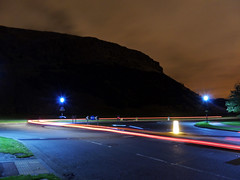Predicting May 2016

It’s not easy, however. What really happened in May 2015 was the SNP won all the Westminster seats apart from three local “accidents” — the non-SNP seats could just as easily have been some other ones if different candidates had been elected, or if different events had happened.
Given that the opinion polls haven’t really moved since then (and given that Scots now seem to be voting in roughly the same way for Westminster and Holyrood), the best prediction for the constituency seats is exactly the same — namely that the SNP wins all the seats apart from a few local hiccoughs. However, trying to put a name on these exceptions would be impossible and futile at this time, even though the SNP candidates have now been selected.
What about the list seats, then? Well, it all depends.
If all the people voting SNP for the constituency repeat this for their second vote (i.e., a successful “both votes SNP” strategy), the North East demonstrated in 2011 that it’s possible to win all the constituencies and still get a list seat, so it’s possible the SNP will win about 80 out of the 129 seats (the constituency seats plus seven list seats — if there are a few “accidents”, this number wouldn’t change as the list allocation algorithm would step in to compensate for them).
On the other hand, if the smaller pro-independence parties (the Greens, the SSP and Solidarity) manage to convince enough Yes voters to split their votes (i.e., a “second vote Green/SSP” strategy), it’s entirely possible the SNP won’t pick up any list seats at all (except perhaps in regions where one or maybe even two “accidents” happen), and the real question then is whether these smaller parties will get enough votes to get any seats at all. Realistically they will manage to do this in Glasgow and Edinburgh, but in the more rural regions it’ll be a lot harder).
As I’ve shown before, the way to get as many pro-independence MSPs is that the voters adopt the same tactics: “The best solution is that nobody votes Green, or that more than 25% of Yes voters do so. The worst possible scenario is that about 8% of Yes voters vote Green on the list.” Is this likely? I’m not sure. I’d be very surprised if the Greens and perhaps the SSP (RISE) didn’t do well in the largest cities, but will they manage to convince SNP voters there to vote tactically for them? Also, will the SNP manage to convince Yes voters outwith Glasgow and Edinburgh that voting anything other than SNP on the list is likely to help the Unionist parties?
It’s a strange election because the key to predicting the outcome is to anticipate tactical voting rather than reading opinion polls.
However, if I was marched down to a bookie at gunpoint and forced to put my life savings on a specific outcome, I think I’d go for this: SNP 73, Tory 23, Labour 22, Green 8, SSP 2, LD 1, Solidarity 0. There’s no science to this, only intuition. (I realise the LD figure is ridiculously low, but nobody has lost money underestimating the support for my old party for a very long time.)
What we really need is precise polls for each region. The constituencies don’t matter that much (the outcome is unlikely to change the number of seats won by each party), but we really need to know the level of support for the smaller parties in each region. Lord Ashcroft, are you reading this?
Predicting May 2016 http://t.co/QWRcpZvXSa
How do you feel about the conservatives benefitting from the MMP voting system?
Given that I grew up with proportional representation, I don’t see any problems in that regard. It’s FPTP I can’t stand.
RT @Lesserpawn: Predicting May 2016 http://t.co/QWRcpZvXSa
Predicting May 2016 http://t.co/9gARaoeHWs
Alister Rutherford liked this on Facebook.
Rob Scovell liked this on Facebook.
RT @BuggerLePanda: Predicting May 2016 http://t.co/9gARaoeHWs
RT @BuggerLePanda: Predicting May 2016 http://t.co/9gARaoeHWs
Good article Thomas Widmann. You should go with your first inclination for elections. You seem to have a better sense of the outcome than the “experts”.
Slab pushed to 3rd behind the Tories!
http://t.co/dpcZxctDUM
RT @YesGiffnock: Slab pushed to 3rd behind the Tories!
http://t.co/dpcZxctDUM